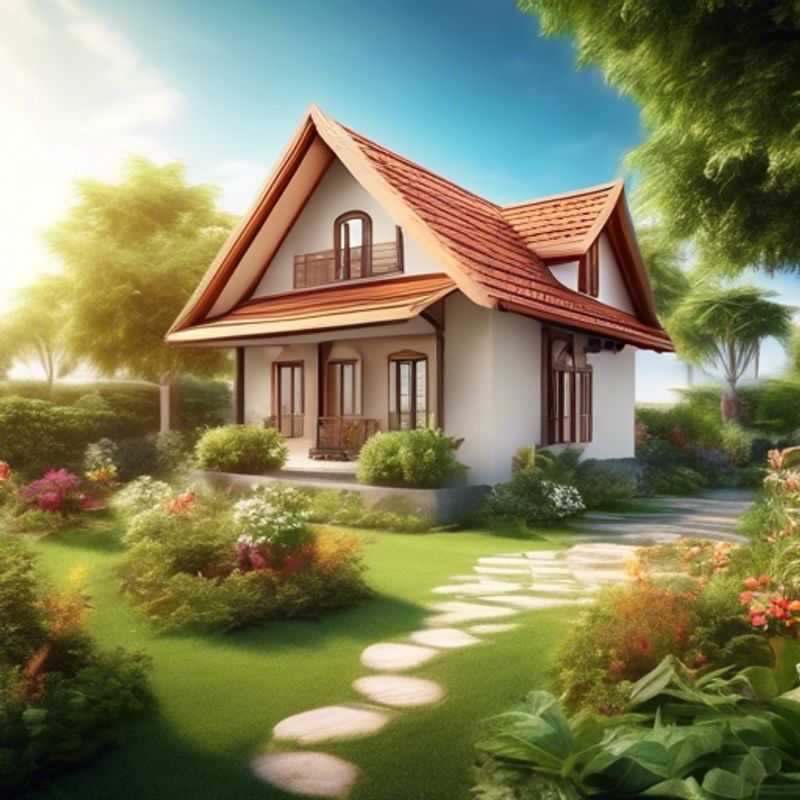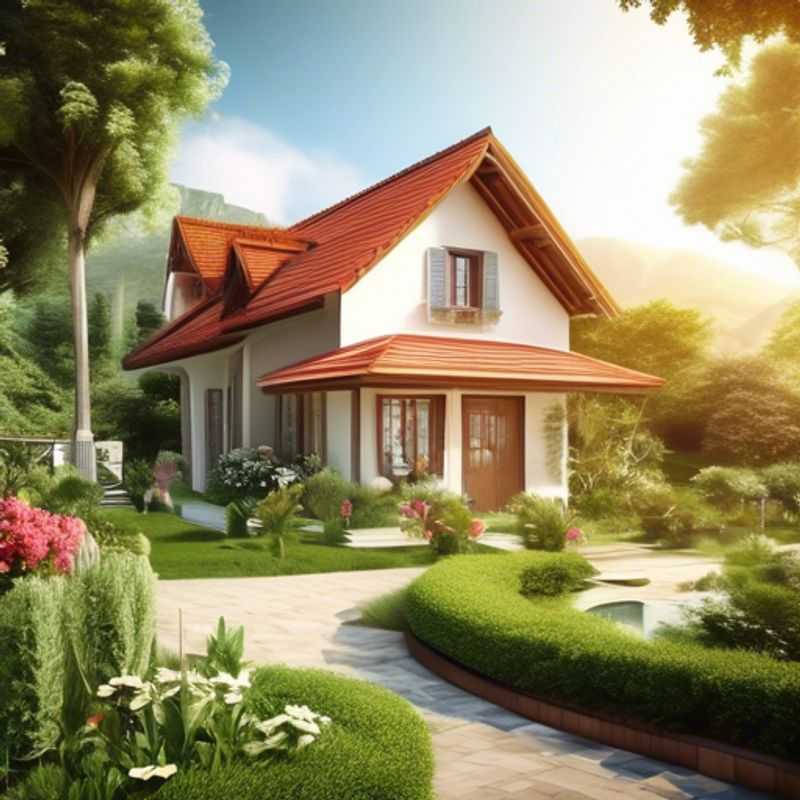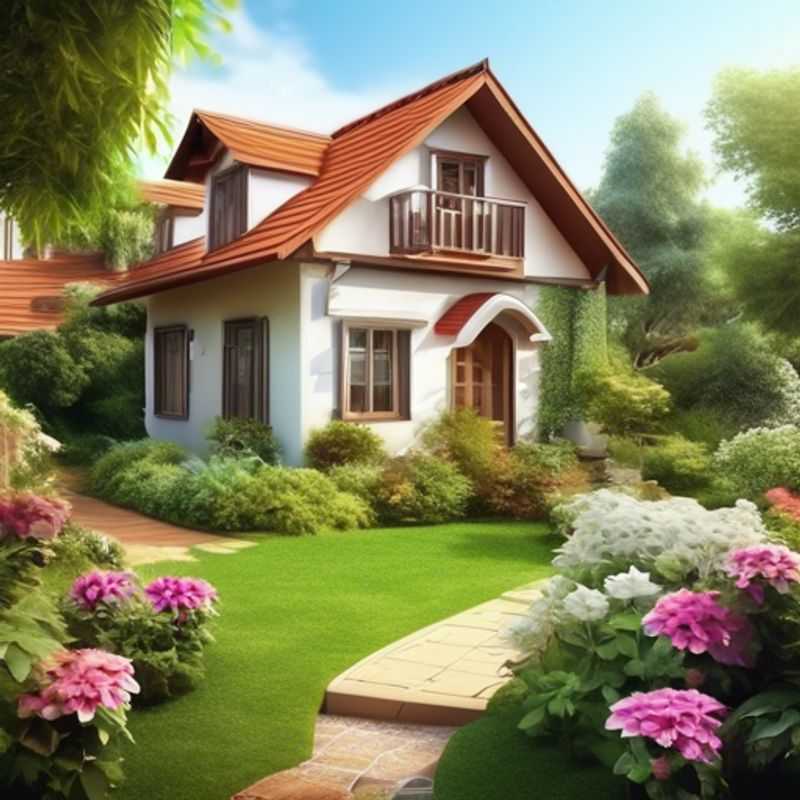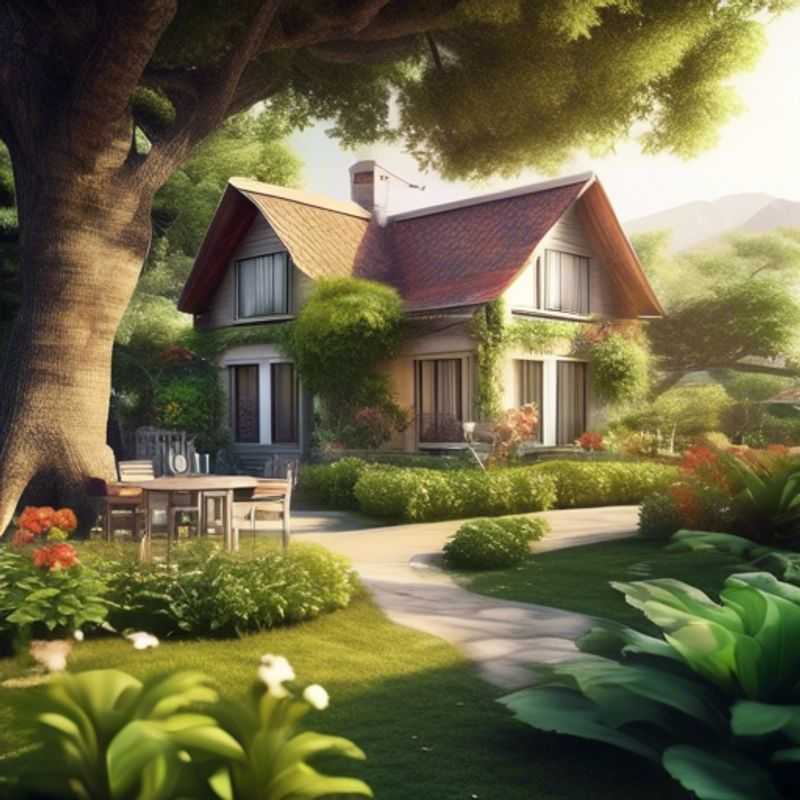Top Things to Know Before Buying a Beautiful Small House with Garden

The Essential Guide to Buying a Beautiful Small House with Garden: Key Considerations Before You Commit
Ah, the allure of a charming small house with a delightful garden! It's a dream many of us share, but before you embark on this exciting journey, let's delve into some crucial considerations.
Firstly, it's essential to research the local zoning laws and regulations. This ensures the property can be used as you intend, be it a cozy retreat or a bustling social hub. Next, a thorough inspection is a must. Inspect the condition of the house and garden, including any potential issues. This might involve a professional assessment to uncover hidden surprises.
While the charm of a small house is undeniable, let's be practical. Understand the costs associated with maintaining a small house and garden, such as utilities, landscaping, and repairs. A detailed budget will prevent any unwelcome financial surprises.

Decoding Zoning: Understanding Local Laws for Your Property's Purpose
When considering a property for purchase or development, it is crucial to research local zoning laws and regulations to ensure that the property can be used as intended. Zoning laws dictate how land can be utilized within specific areas, affecting residential, commercial, and industrial uses. Key aspects to investigate include permitted uses, setback requirements, height restrictions, and density limits.
To conduct this research effectively, you may need to visit your local planning or zoning office, which could involve fees for accessing public records or paying for copies of zoning maps. Additionally, consider any consultation fees for hiring a land use attorney or a zoning expert, who can provide guidance and clarity on complex regulations.
Another important aspect is to check for any special permits or variances that may be required for your intended use, which may also incur additional costs. Always ensure that you are aware of any upcoming zoning changes that could impact your property’s use in the future. By thoroughly understanding these elements, you can avoid costly mistakes and ensure your property serves its intended purpose.

Home & Garden Inspection: A Thorough Look at Potential Issues
A thorough home and garden inspection is crucial before purchasing a property. Here's a breakdown of the key areas to focus on, along with potential issues and associated costs:
House Inspection:
Structure: Examine the foundation, walls, roof, and attic for cracks, leaks, or signs of settlement. Cost: Around $300-$500 for a professional inspection.
Electrical System: Check for outdated wiring, faulty outlets, or overloaded circuits. Cost: Upwards of $500 for electrical repairs or upgrades.
Plumbing: Inspect pipes for leaks, corrosion, or blockages. Cost: Plumbing repairs can range from a few hundred dollars for minor fixes to thousands for major repairs.
Heating and Cooling: Ensure the HVAC system is in good working order and properly sized for the house. Cost: Annual maintenance is typically around $100-$200. Replacements can be expensive, starting at $3,000.
Garden Inspection:
Landscaping: Assess the condition of trees, shrubs, and lawn. Check for pests, diseases, or signs of poor drainage. Cost: Landscaping services can vary, ranging from $50-$100 per hour for basic maintenance to thousands for major re-landscaping.
Irrigation System: Inspect the sprinklers and valves for leaks, damage, or proper function. Cost: Repairs can range from $50-$200 per hour.
Drainage: Ensure proper drainage to prevent waterlogging or erosion. Look for signs of pooling water, sunken areas, or overflowing gutters. Cost: Drainage repairs can range from a few hundred dollars to several thousand depending on the scope of the issue.
Fencing: Check the fence for damage, gaps, or missing panels. Cost: Fence repairs can range from a few hundred dollars for minor repairs to thousands for full fence replacement.
Remember, this is just a starting point. A thorough inspection by qualified professionals is always recommended. For further information about specific issues or associated costs, consult local experts or search online.

Unveiling the Costs: Maintaining Your Small House and Garden
Owning a small house and garden comes with the responsibility of ongoing maintenance costs. These costs can vary depending on location, house size, garden size, and individual lifestyle choices. Here's a quick breakdown of the most common expenses:
Utilities: This is the biggest recurring cost, including electricity, water, gas, and internet. The average monthly cost for utilities in the US is around $200, but it can fluctuate significantly based on your usage and climate.
Landscaping: Maintaining your garden can be costly, depending on its size and the level of maintenance you desire. This includes lawn care, weeding, pruning, fertilizer, and potentially hiring a landscaper.
Repairs: Expect occasional repairs for your house and garden. This could range from minor repairs like fixing a leaky faucet to more significant projects like roof replacements. Keeping an emergency fund for unexpected repairs is a wise idea.
Other Costs: Other potential expenses include home insurance, property taxes, pest control, and regular cleaning services. If you have a pool or hot tub, their maintenance will add further costs.
Key Takeaways: Budgeting for home and garden maintenance is crucial. It's a good idea to factor in an estimated monthly cost for these expenses. Consider using a budgeting tool or creating a spreadsheet to track your expenses. Remember, regular maintenance helps prevent larger and more expensive repairs down the road.

House Size and Layout: Finding the Perfect Fit for Your Lifestyle
Let's dive into the world of building your dream home, starting with the fundamental step of determining the size and layout of your house. You need to consider how this space will adapt to your lifestyle and needs, ensuring a harmonious blend of functionality and comfort. This process involves understanding your family size, current and future living requirements, and envisioning how the various rooms will function. A well-planned layout fosters efficient living, promoting ease of movement and functionality within the home.
The size of your house should accommodate your family’s size, considering both current and future needs. An expansive layout might seem appealing but may lead to higher maintenance costs and require more energy for heating and cooling. Conversely, a cramped space can become uncomfortable, especially if your family grows. It's essential to find a balance between your aspirations and realistic needs to ensure you build a home that serves you well for many years to come.

Neighborhood Exploration: Evaluating Location and Amenities
Before committing to a new location, it's essential to understand the neighborhood and its amenities. This process involves more than just a casual stroll. It's about gathering crucial information that will impact your daily life. Pay attention to the following aspects:
Safety and Security: Walk around different times of day and night, observing the environment. Notice the presence of street lights, security cameras, and pedestrian traffic. Engage in conversations with local residents to gauge their perceptions of safety.
Transportation: Assess the availability and accessibility of public transportation, such as buses, trains, or ride-sharing services. Consider the walking distance to bus stops or train stations, and the frequency of service. If you drive, investigate parking options, traffic patterns, and the proximity to highways.
Amenities: Explore the neighborhood's amenities, like grocery stores, pharmacies, restaurants, parks, and schools. Consider their proximity to your potential residence and if they meet your needs. Take note of the quality and variety of the options available.
Community Vibe: Pay attention to the overall feel of the neighborhood. Is it a bustling hub, a quiet residential area, or a mix of both? Observe the types of businesses and activities happening around. This will help you determine if the environment suits your lifestyle.
Noise and Pollution: Consider the presence of noise sources like traffic, construction, or industrial activity. Observe the air quality and the overall level of environmental pollution. These factors can significantly impact your quality of life.
Property Values: Research the recent history of property values in the neighborhood. Consider factors like appreciation, depreciation, and any planned development projects that may affect prices.
Property Taxes: Inquire about the property tax rates for the area, as they can vary significantly. Remember that local government websites can be excellent resources for this information.
Cost of Living: Estimate the cost of living in the neighborhood, including factors like groceries, utilities, and entertainment. This will help you determine if the location fits your budget.
Community Events and Activities: Explore the local community calendar to understand the types of events and activities available in the neighborhood. This can provide insights into the overall culture and sense of community. Local newspapers and community websites can be helpful resources.
Property Maintenance: Observe the condition of the surrounding properties and the level of maintenance. This can give you an indication of the overall quality of the neighborhood and the standards for upkeep.
By thoroughly investigating the neighborhood, you gain a comprehensive understanding of its strengths and limitations. This information helps you make an informed decision about whether the location aligns with your needs and preferences.

Unveiling HOA Fees and Rules: A Homebuyer's Guide
Before you buy a home in a community with a homeowners association (HOA), it's essential to understand the financial and lifestyle implications. HOA fees can significantly impact your budget. These fees cover shared amenities like pools, fitness centers, and landscaping, but also fund maintenance and management. Make sure you understand the specifics of what the HOA fees cover and how they're determined.
HOA rules and regulations are another crucial aspect. They can govern everything from exterior paint colors to pet restrictions. You need to ensure these rules align with your lifestyle. Review the HOA's governing documents carefully to understand the limitations and restrictions.
Knowing the details of HOA fees and rules is important for informed decision-making. You can find this information through the HOA's website, brochures, or by contacting the HOA directly. Investing time in understanding the financial and lifestyle implications of an HOA will ensure a smooth and enjoyable homeownership experience.

Predicting Resale Value: Market Trends and Your Property's Future
Understanding the long-term resale potential of a property is crucial for informed real estate decisions. This involves evaluating the market trends that influence property values and future demand. Here's a guide to help you assess the potential of your property:
Location, Location, Location: The neighborhood's growth trajectory, amenities, and proximity to employment centers play a significant role. Look for areas with strong job markets, good schools, desirable lifestyle features, and ongoing infrastructure development.
Property Type and Features: Consider the demand for the specific type of property (single-family home, condo, apartment) and its features. Properties with desirable features such as a large yard, updated kitchens, and energy-efficient upgrades tend to command higher resale prices.
Economic Factors: Analyze local and national economic conditions. A robust economy typically supports strong real estate markets, while economic downturns can impact property values. Consider factors like interest rates, employment rates, and inflation.
Market Research: Consult real estate websites, market reports, and local real estate professionals to gather insights into current trends and future projections. Analyze data on recent sales, inventory levels, and price fluctuations in the area.
Expert Opinions: Consulting with experienced real estate agents or appraisers can provide valuable insights and personalized advice on the potential of your property. These experts can help you understand the local market dynamics and make informed decisions.
Maintenance and Upgrades: Investing in regular maintenance and strategic upgrades can enhance your property's value and marketability. Focus on improvements that address common buyer preferences and address any potential issues that might deter potential buyers.
Market Volatility: Remember that real estate markets are cyclical. Be prepared for short-term fluctuations and long-term trends. Staying informed about market conditions and adapting your strategy accordingly is essential.
